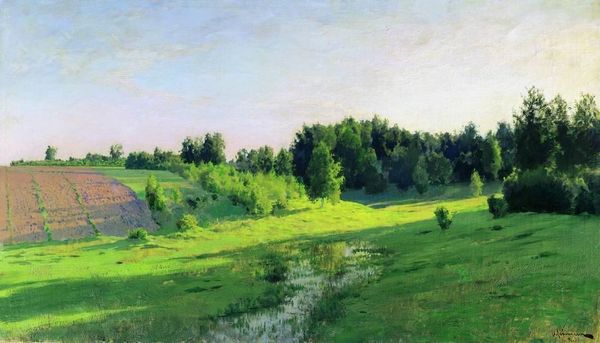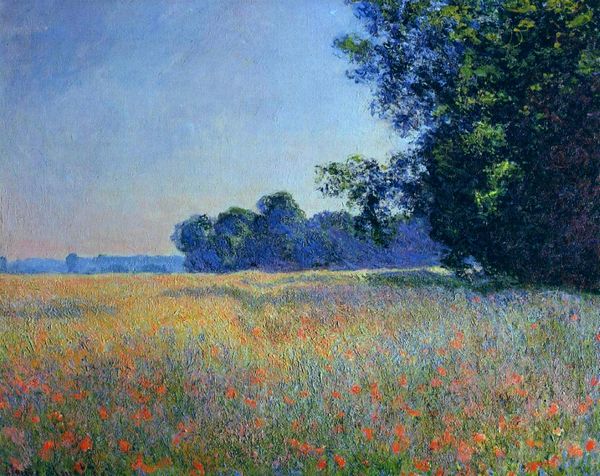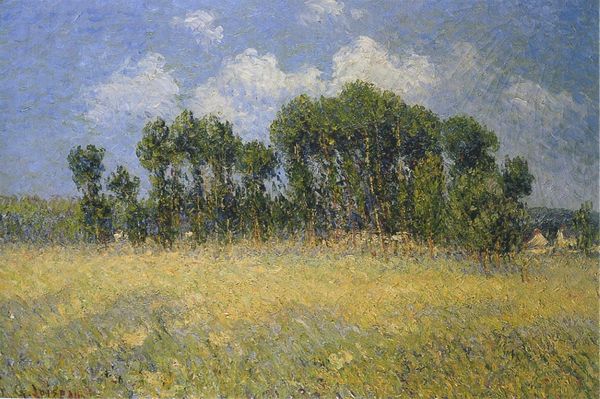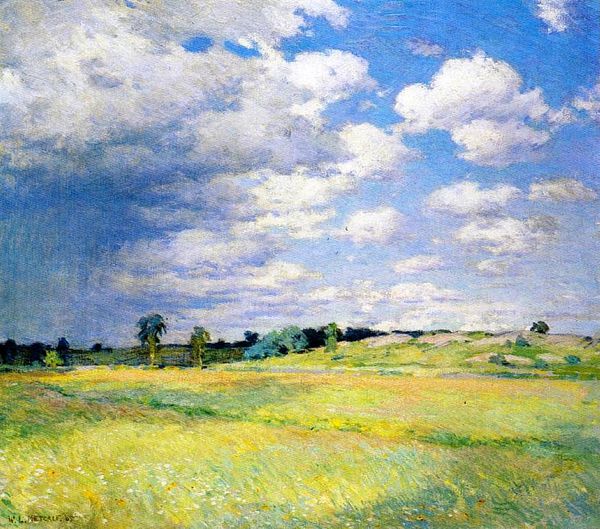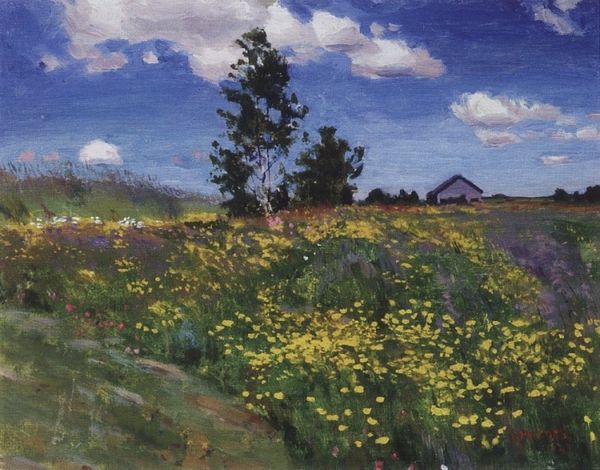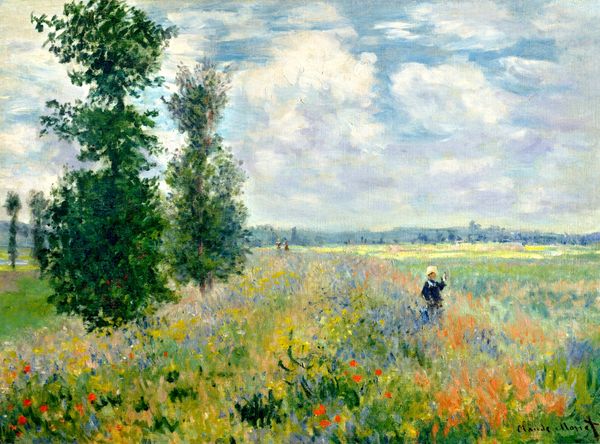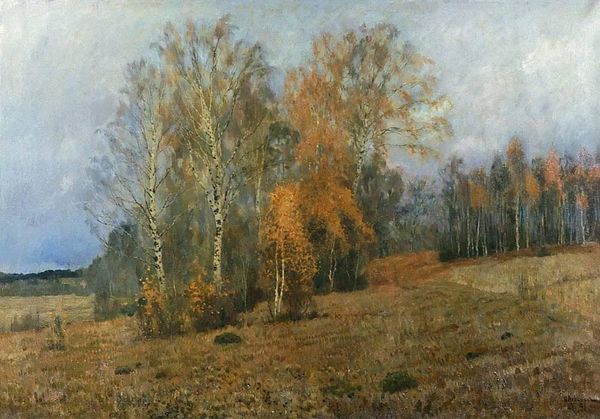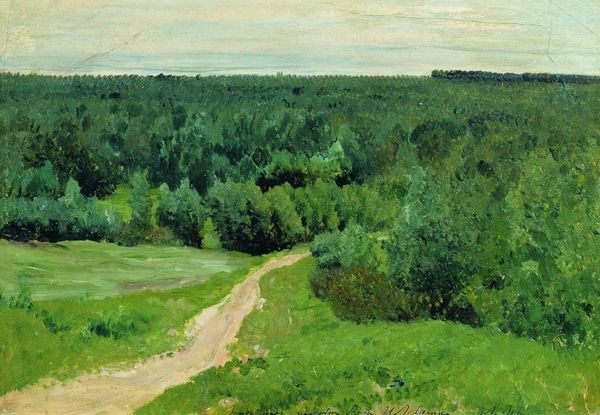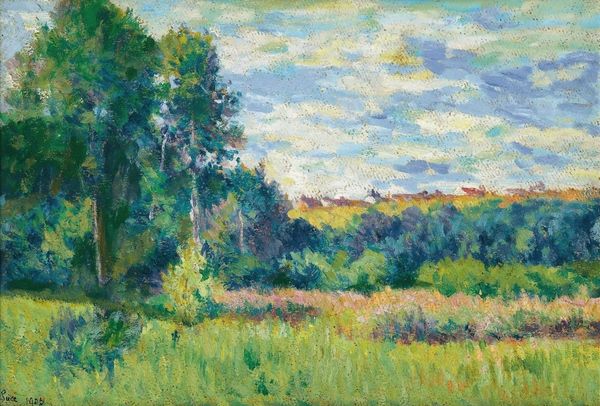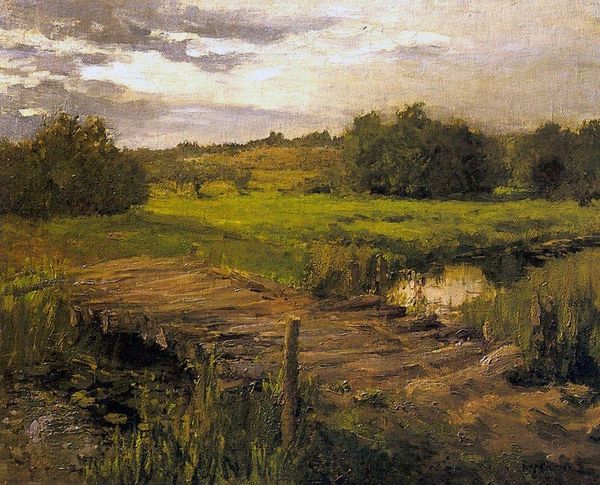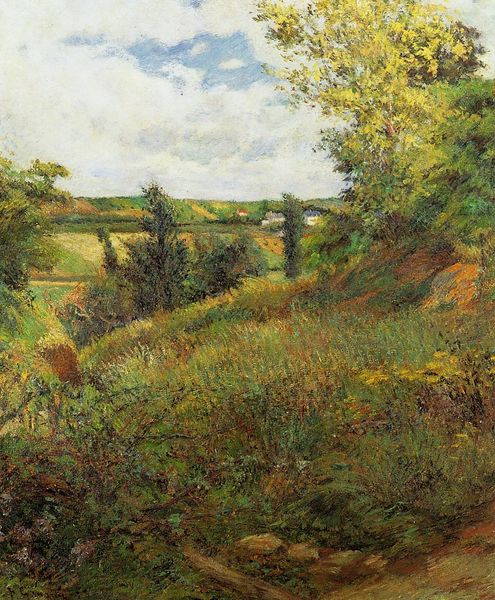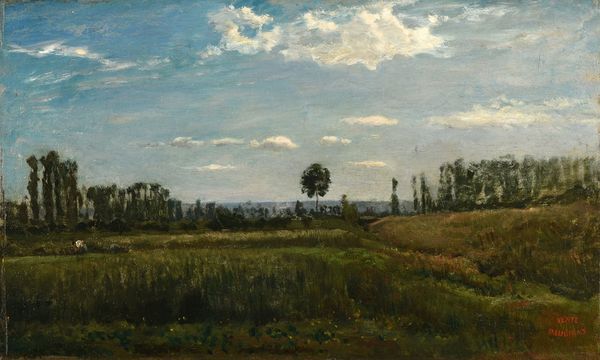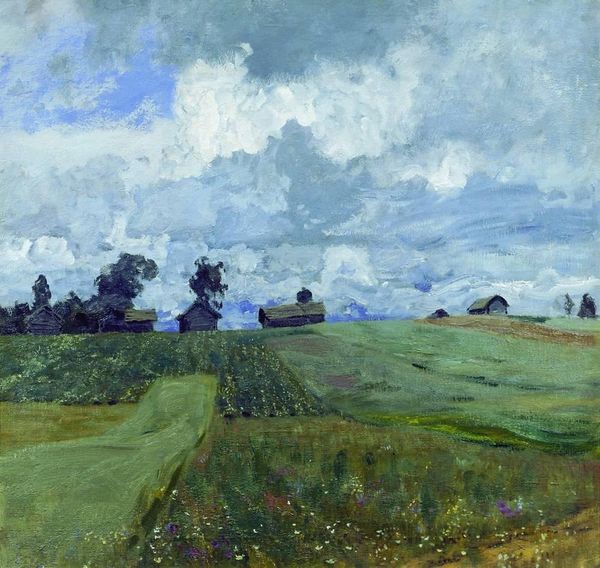
Copyright: Public domain
Isaac Levitan painted this landscape, named A day in June, in the late 19th century. Observe the field of wheat to the left, a symbol of fertility and prosperity found in various cultures from ancient Egypt to the Roman Empire, often linked to deities of agriculture. Consider the single birch tree rising above the meadow. This recalls the ancient reverence for trees as symbols of life, strength, and connection between the earthly and the divine. The birch, with its white bark, has been seen through time as a representation of purity and new beginnings. One can trace these motifs through countless artworks and rituals. The wheat, for instance, appears in Van Gogh’s fields, imbued with a sense of labor and the cycle of life. In contrast, the birch is visible in Nordic traditions, where it symbolizes light overcoming darkness. Notice how Levitan, through the symbolism of wheat and trees, engages our collective memory, reminding us of the enduring connection to nature. It's a deep, subconscious longing for harmony with the earth, a sentiment that transcends time and cultural boundaries.
Comments
No comments
Be the first to comment and join the conversation on the ultimate creative platform.
